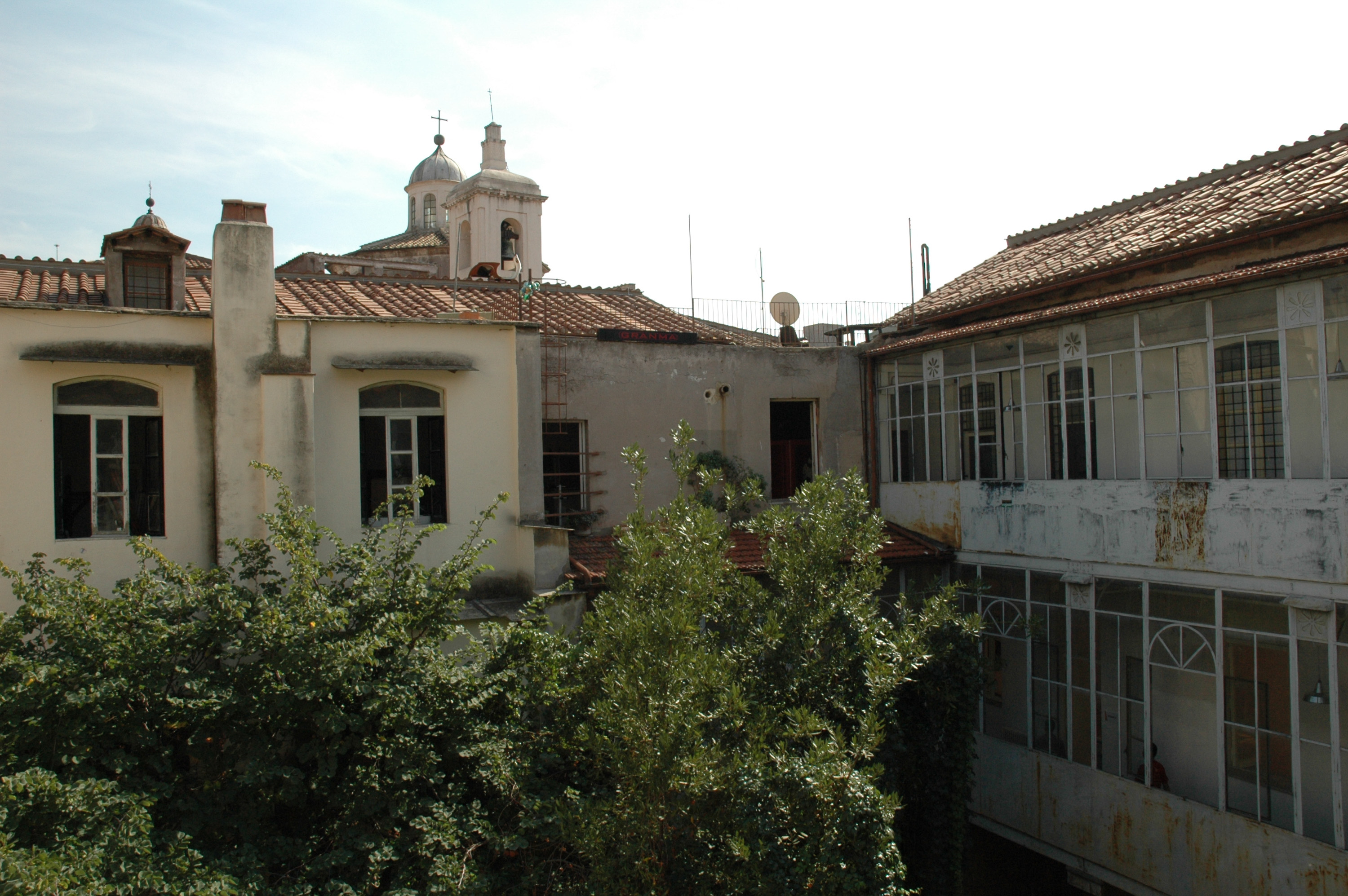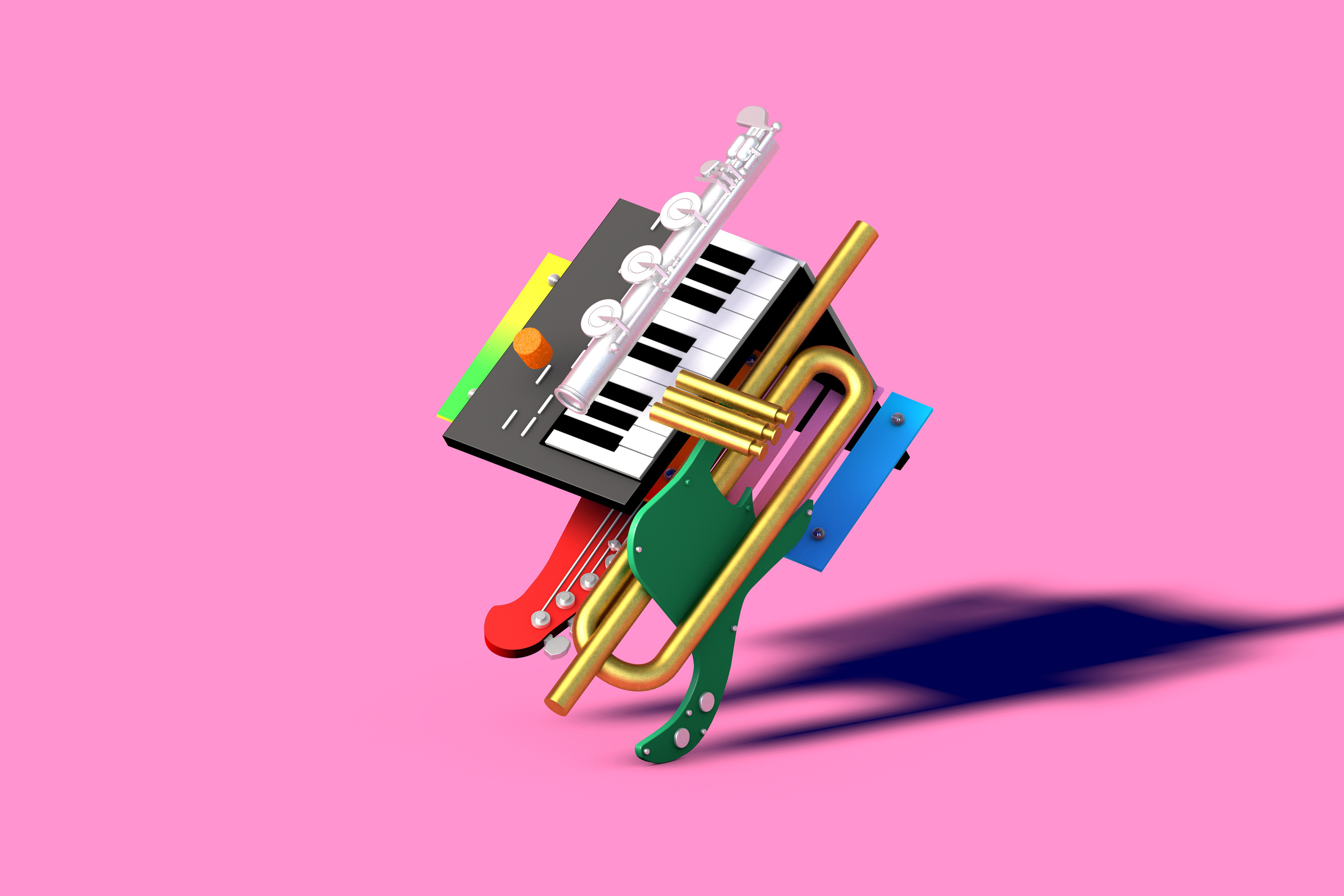Turin in the ’80s: Italy’s Most Vibrant DIY Electronic City
For a brief moment Turin was Italy’s Sheffield, producing an astonishing number of DIY electronic groups. Louis Pattison explains why
At the dawn of the ’80s, western Europe was teeming with fledgling DIY electronic groups, encouraged by a string of internationally successful synth pop bands like The Human League, Depeche Mode, New Order and the sudden accessibility of affordable synthesisers, sequencers and drum machines. In some localities, this flurry of musical activity came to resemble a movement (in France, vague de froid, or cold wave; in Germany, Neue Deutsche Welle). Elsewhere, thanks to the vagaries of geography, lack of music industry infrastructure or plain bad luck, groups would form, rehearse, play shows and split up leaving barely any trace at all, only to be rediscovered and pored over three decades on by post-punk archaeologists.
In the context of a wider Europe, Italy has never been thought of as a hotbed of minimal electronic music, but Mannequin Records’ 2009 compilation Danza Meccanica: Italian Synth Wave 1982-1987 and this year’s Strut Records compilation Mutazione: Italian Electronic & New Wave Underground 1980-1988 have shone a light on a scene little heard, even within Italy’s borders. Now, Mannequin Records have released a run of archival reissues suggesting that, between the years of 1981 and 1986, the city of Turin in northwest Italy was home to a quiet underground renaissance of experimental synthesised pop music.
Mannequin’s Alessandro Adriani describes Turin as Italy’s equivalent of Sheffield, a city producing sounds “destined to inspire future generations of musicians and producers.” Records by Chromagain, Monuments, Tommy De Chirico or Musumeci may not be as strictly innovative as contemporaneous records by, say, The Human League or Cabaret Voltaire, but in their primitive fusion of post-punk attitude and primitive electronics, they do suggest there was something in the water.
Like Sheffield, Turin is a city of industry. Throughout the 1950s and ’60s, thousands of workers relocated from the countryside to work at the FIAT Mirafiori assembly plant, a gigantic industrial conurbation in the city’s south. The ’70s, though, ushered in the “Years Of Lead,” a period of economic stagnation and political radicalisation across the country, characterised by bitter industrial action and the rise of terror groups on both left and right.
Turin was widely observed as a city in decline, which made it fertile ground for revolutionaries of all stripes. Derelict and abandoned buildings were squatted under the banner of Collettivo Punx Anarchici, which in turn spawned politically motivated punk groups like Contrazione and Negazione. Turin’s nascent minimal electronic groups, though, fed off the city’s atmosphere in different ways. “At the time we as a band didn't have a clear political involvement,” says Luca Pastore, who formed Chromagain in Turin in 1982. “But for sure we were against tradition. We tried to experiment with something new through music, speaking in a simple way about mass exploitation or media manipulation.”
Chromagain began as a post-punk band, but over time accrued electronic equipment such as Korg and Juno synthesisers and TR-808 and 909 drum machines, inspired by the example of international groups like Section 25, Death In June and especially San Francisco’s artsy, elegant Tuxedomoon, who played in Turin in 1982. “Increasingly, we wanted to create a colder atmosphere, and electronic music felt like a way to transfer the dark and claustrophobic mood we felt at the time into music,” says Pastore.
When you come off the highway from Milan, it was so chaotic... But the centre of the city is beautiful, almost Parisian... This mix of the industrial and the classical gave the city a certain decadent feel.
Fred Ventura, later to make his name as one of the big names of Italo disco, first visited the city in 1982 with his post-punk band State Of Art. “I was shocked by the look. When you come off the highway from Milan, you enter a long street called Corso Giulio. Now it is different, but then it was so chaotic – thousands of cars, a lot of confusion, everywhere dirty. But the centre of the city is beautiful, almost Parisian in a way. This mix of the industrial and the classical gave the city a certain decadent feel – something I think you can hear in the music of this time.”
Turin was no backwater. The city boasted a thriving nightlife, based around clubs like Studio 2 and the legendary alternative haunt Tuxedo on Berthollet, a few blocks from the river Po. The fanzine Rockerilla, distributed across Italy, covered new wave and industrial music from both inside and outside the country’s borders. Meanwhile, Turin itself had a respectable history of electronic experimentation. The composer Enore Zaffiri taught music concrete and tape composition at the Turin Music Conservatory from the 1950s onwards, and by the late ’70s was running free synthesiser workshops, open to all. Andrea Costa, who would sing and play synth in Monuments, attended one of Zaffiri’s classes. “They allowed many young musicians to understand the rudiments of synthetic music,” he remembers. “It was here that many of us learned how to work an analogue synth and generate sound from silence.”
Perversely, perhaps, the popularity of disco in the mainstream nightclubs meant that many punks felt a reflective distaste for electronic music. “When the Human League played in Milan supporting Iggy Pop in 1979, the audience were shocked, they were throwing stuff,” recalls Fred Ventura. “Kraftwerk were popular in the disco. ‘The Man Machine’ and ‘Trans Europe Express’ would be played in the club alongside Donna Summer and Giorgio Moroder. But the post-punk crowd had a very strict, closed-minded attitude. Electronic music was seen as a commercial sound.”
Widely thought of as the finest of the Turin groups of this era is Monuments. Andrea Costa and Mauro Tavella, who first played together in 1978 in the experimental band Teknospray, rebranded themselves as Monuments in January 1981. Monuments’ sole album, 1984’s Age, is a mix of stately gothic gloom and rousing synthesizser anthems, not quite as slickly produced as John Foxx’s Metamatic or early Depeche Mode, but certainly comparable in its melodic ambition. “The music that most interested us at the time, in terms of atmosphere, was the Factory Records sound,” recalls Costa. “But our spiritual fathers were Kraftwerk and the German cosmic music of the ‘70s, and our desire was to combine all this with the classic Italian melodies: Verdi, Rossini, Puccini.”
Monuments toured extensively, playing around 400 concerts in Italy and further afield, in France and Germany. “Age did very well in terms of critics and sales, but really we lived on the outskirts of the empire,” recalls Costa. “To sell 1,500 copies was a success for a product of the Italian underground, but that did not mean ‘real money.’”
Our spiritual fathers were Kraftwerk and the German cosmic music of the ’70s, and our desire was to combine all this with the classic Italian melodies: Verdi, Rossini, Puccini.
While Monuments found a grassroots base, Italian record companies largely ignored the minimal electronic sound, instead attracted to the more conventional post-punk bands or the commercial dance sound of Italo disco. Relatively little music from the Turin scene found its way to vinyl. In 1985, Chromagain – honed to the trio of Luca Pastore, Silvio Ferrero and Davide Bassino – released a fine mini-album of evocative darkwave, titled Any Colour You Like, on Supporti Fonografici, a label affiliated with the Milan record shop of the same name.
Others, like Tommy De Chirico – an associate of Monuments and Chromagain, and a former member of the Turin post-punk band Politburo – struggled to find a label at all. In 1984, he released a solitary single – a murky, Cure-indebted 7-inch produced by Monuments’ Mauro Tavella titled Close Your Eyes – in an extremely limited run on Turin’s Shirak Records. Mannequin Records’ Alessandro Adriani only learned of its existence when he happened on it at a flea market. “I recognised the name of Mauro Tavella of Monuments on the sleeve, and knew it had to be good shit,” he says. “And I was right.” Adriani tracked De Chirico down and later recovered enough of his music to fill a 12-inch EP. In the process, he also discovered a never-before-seen video for De Chirico’s “Flower in the Factory,” directed by Chromagin’s Luca Pastore, that captures something of the Turin scene’s taste for grandiose melancholy and jaded romanticism.
Similarly overlooked was Musumeci, a group formed in 1985 from the ashes of post-punk groups Rude Pravo, K Position and Errata-S-Corrige. Mauro Massaglia, founder member and lead synthesizer, describes the band’s aesthetic as “simple music, no solos, new sounds, all played at maximum volume possible.” Certainly, the group’s two unearthed demo tapes, Schwarz Morgen and Zusammen – both released in a home-dubbed run on their own label, Zeltweg – reflect this, tracks like “Schwarz Morgen” and “Apocalypse” built on a brute body music pulse akin to DAF or Liaisons Dangereuses.
Massaglia recalls Musumeci’s live shows as multimedia performances of a confrontational stripe, mixing rough sound collage with provocative visuals. “Our intention was to involve the viewer with two senses: ear and eye,” he remembers. “We loved stupid old black-and-white movies or war images, Berlin in the May of ’45, the Vietnam conflict, corrupt Italians involved into massacres or scandals… in short, all the shit that the human race can produce.”
Before the Turin scene gained any real commercial traction, it was all over. Come 1987, Monuments had tired of the “pop group lifestyle,” and made the decision to quit touring. “The wind was changing,” says Andrea Costa. “To us, it seemed more natural to work just in the studio.” Monuments started composing for soundtracks. Chromagain split in 1986, and Luca Pastore, encouraged by his audio-visual experiments with the band, pursued a successful career as a filmmaker. Fred Ventura, meanwhile, had already found a new direction and became one of the better-known vocalist-producers in the ’80s Italo disco scene. “Although some would say my music was too sad, too melancholic to be truly successful,” he laughs. “Maybe the Ian Curtis vibe was still present in me.”
In retrospect, the music of Monuments, Chromagain and Musumeci and Tommy De Chirico feels like a stepping stone, bridging the gap between the grey raincoat sound of post-punk and the synthetic, electronic dancefloor future. “To see Human League go to #1 with ‘Don’t You Want Me,’ or ABC with ‘The Lexicon Of Love,’ it pointed to a way more positive, a world less sad,” says Ventura. “When we were young we loved that Joy Division sound, but we were growing. We did not want to be stuck in this déjà vu world, forever listening to this grey, obscure music.”
We did not want to be stuck in this déjà vu world, forever listening to this grey, obscure music.
Undeniably, though, some of this music stands the test of time. While almost unheard at the time, reissued tracks by Musumici have found their way into recent sets by the likes of Ron Morelli and Traxx, where their rather lo-fi production is, if anything, a boon rather than a curse. Mauro Massaglia only discovered that his former band had undergone rediscovery and reappraisal when he idly searched their name on Google. “It’s a strange mix of feelings,” he says. “Looking back, I think that in some way, we anticipated something of the future electronic dance sound.”
“In the ‘80s, the music that made real money in Italy was disco music – the sons of Moroder,” says Andrea Costa of Monuments. “Unfortunately, the music was not yet perfect, not as professional, as that made by the English or the Germans. Italian underground music found its maturity in the 1990s with bands like Almamegretta, Casino Royale, Africa Unite and Subsonica. But we were pioneers. The bands that came later would not have existed without our experience.”

